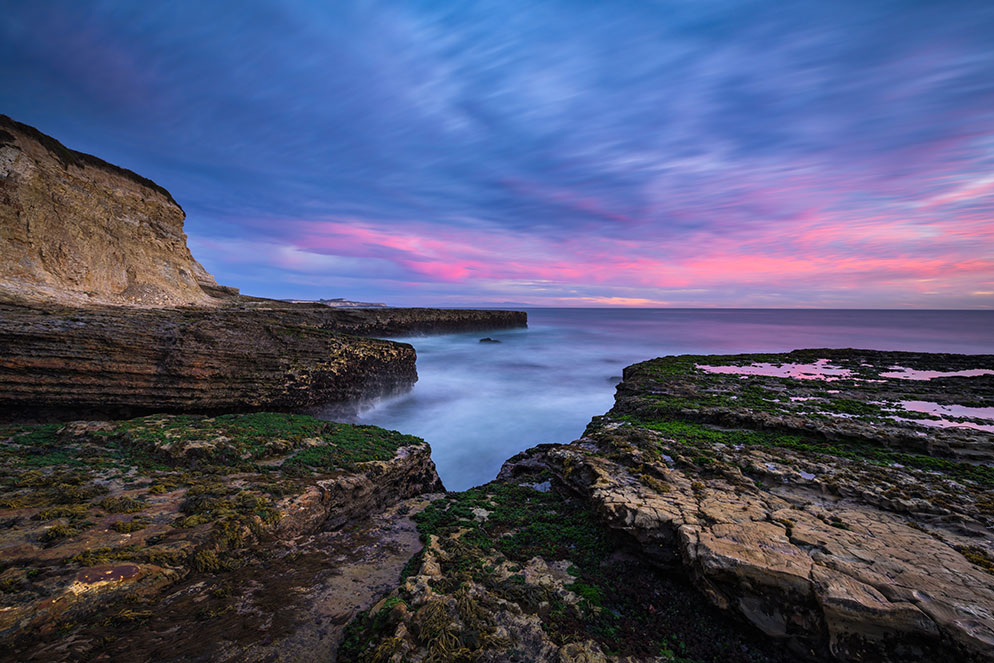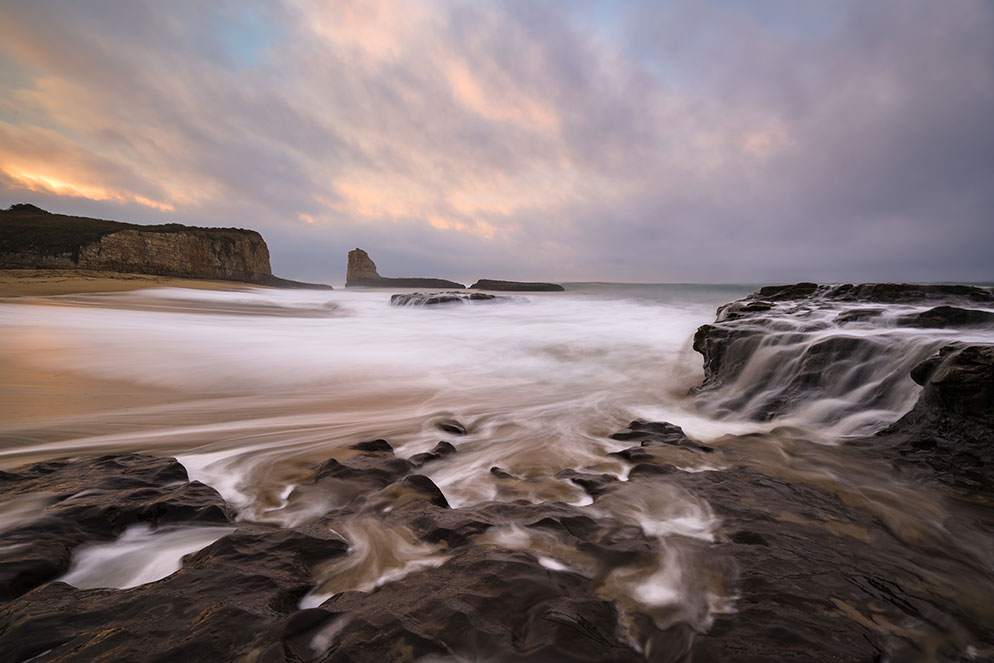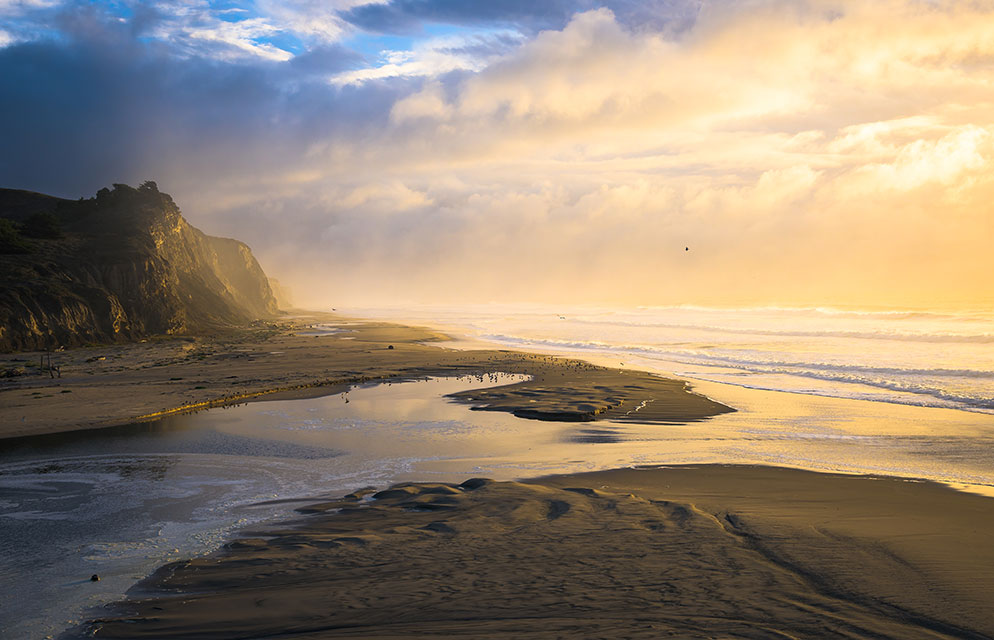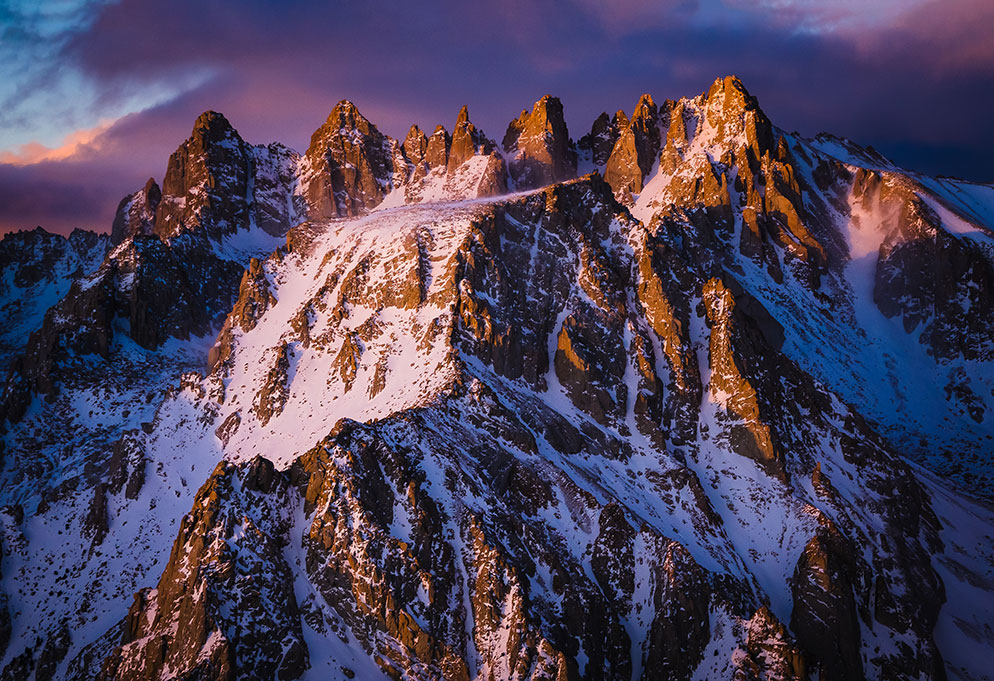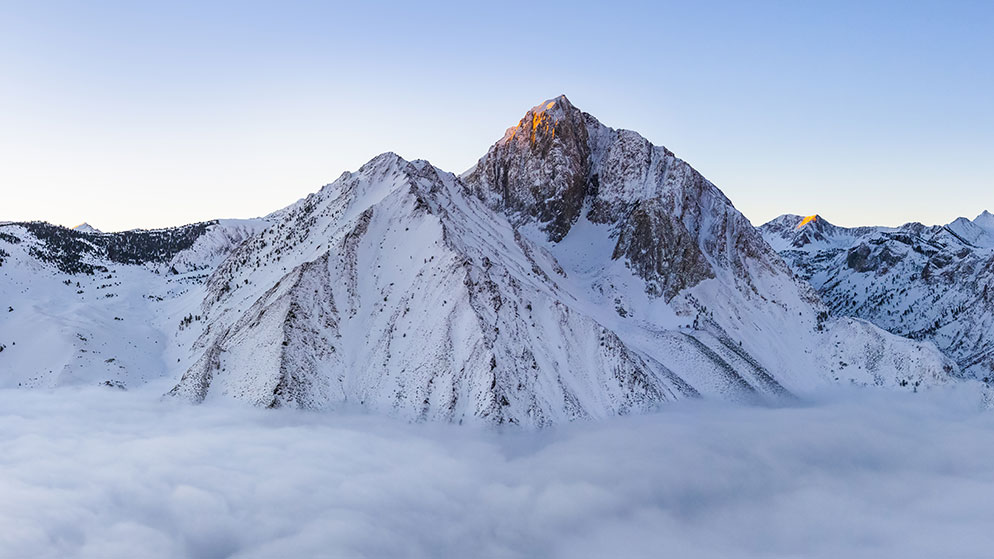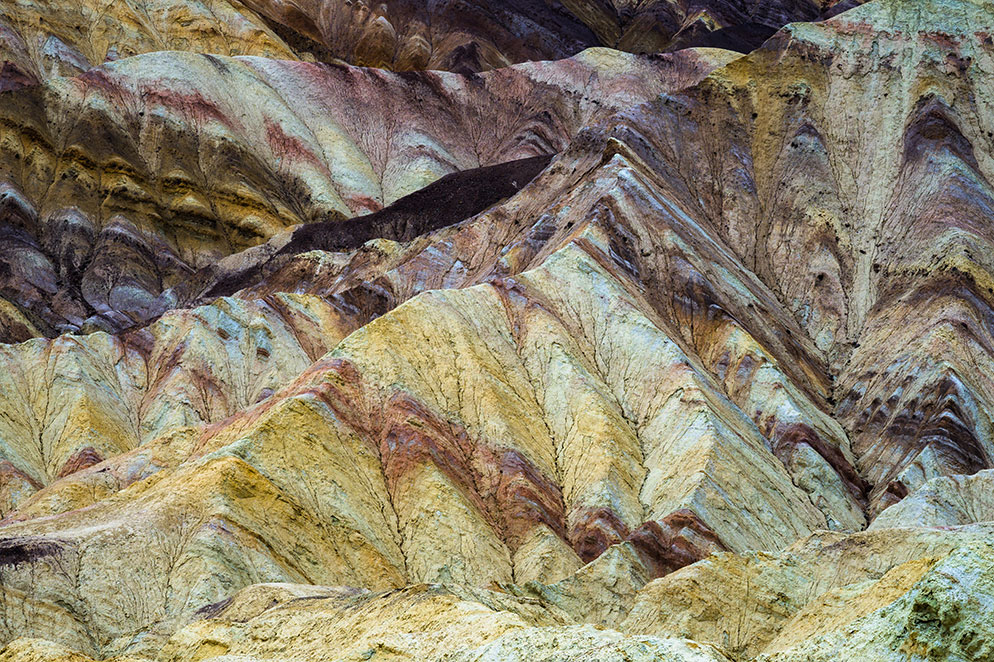The Story So Far: Z 7's Versatility Adds Options For Landscape Photographer
Sunset at Hole-in-the-Wall Beach, Santa Cruz, California, in a ten-image composite. "I set the Z 7 for multiple exposure mode—ten images at six seconds each," Josh says, "and I merged them later into what a 60-second image would look like." Z 7, Mount Adapter FTZ, AF-S NIKKOR 14-24mm f/2.8G ED, ten six-second exposures, f/16, ISO 64, manual exposure, Matrix metering.
Joshua Cripps saw the problem right away.
He considered his 19-month, round-the-world adventure "a life-changing experience," but the photos he'd taken were...well, not very good. "They were all just vacation snapshots that didn't even capture the surface of the experience," he says.
So Josh got a better camera—a Nikon D50, to be precise—and eventually made his way to Alaska, where he traveled and photographed for five weeks, all the while thinking he was taking epic, National Geographic-quality pictures. "The places I was in, the camera I was using—I thought, This is going to be amazing."
Then he got home and loaded the pictures onto the computer. "They were terrible," he says. "They didn't come close to telling the story I wanted to tell. I thought, This doesn't make any sense—I have this great piece of equipment, I was in this wonderful place...."
He did have a few things going for him, though. One was his determination to solve the problem; another was his training as an engineer. Maybe most important was he knew what he didn't know. "I didn't understand the storytelling or artistic techniques of photography." He was aware that the higher the f/stop, the greater the depth of field, but he didn't understand what that meant in terms of the success of a photo—"that if you want your viewer to go on a visual journey through the whole scene, everything you want them to look at needs to be in focus."
Josh used a three-second exposure to smooth the motion of the water for this sunrise image at Four Mile Beach in Santa Cruz, California. Z 7, Mount Adapter FTZ, AF-S NIKKOR 18-35mm f/3.5-4.5G ED, 3 seconds, f/18, ISO 64, manual exposure, Matrix metering.
It was basic, but it was a start, a beginning of communication.
Using the mind-set of an engineer, he started analyzing the images of Galen Rowell, a photographer whose work he admired. "I looked at his photos, and I felt like I was standing in the scene. I thought, How does he do that?"
And he figured it out. "He'd simplified these incredible, beautiful landscapes down to two or three elements that you notice immediately and viscerally, while my photos looked like chaos." Now he knew that simplifying a scene helps convey your vision to the viewer.
He started to break things down and test things out. He learned that when you shoot with a wide-angle lens and get really close to your foreground subject, you exaggerate the subject. And that if you want to capture a glorious rosy sunset, and you choose a white balance that makes those tones go blue or muddy, that just doesn't make sense.
"I began to ask myself two questions every time I was going to take a picture: what is this scene telling me? And, how can I distill that down into a photograph through my technical choices, my settings, my lens selection, my composition?"
He sought out photographers on photo sharing websites. He read Galen Rowell's books—especially Mountain Light, which taught him to think of being an active participant in the landscape. "You don't just show up and photograph what's there; you interact, you make choices, to either convey or create the story you want to tell." Ultimately he built the skill set needed to not only know what to do, but to teach people how to do it too.
Which is what he does today, in workshops, on treks, with his YouTube channel and his series of tutorials. His presentations are spirited and casual; there's no lecturing, fun is an element and there are no unbreakable rules of photography, no big mysteries to solve.
"I learn best when I'm having fun," he says, "and I try to bring lightheartedness and simple, effective ideas to everything. It's very direct: here are the systems, frameworks and ideas that you can plug and play, or build with."
San Gregorio State Beach, near Half Moon Bay, California, at sunset. The story here, Josh says, is "some of the most reflective sand I've ever seen, with the water over the sand reflecting almost all the light in the sky." Z 7, NIKKOR Z 24-70mm f/4 S, 1/60 second, f/11, ISO 64, manual exposure, Matrix metering.
I can just set up the [Z 7] camera and know it's going to focus on me as soon as I step into the frame. And then to be able to move within the frame instead of being stuck in one spot, that's really a big difference and a big advantage.
Mount Le Conte in the Sierra Nevada mountains of California, from a small plane on a day when the Z 7's built-in stabilization was a big help. "Let's say it was an exciting morning," Josh says of the turbulent flight. Z 7, NIKKOR Z 24-70mm f/4 S, 1/500 second, f/5.6, ISO 1000, manual exposure, Matrix metering.
One for All
There were two reasons we were looking forward to talking with Josh. One was the story of his road to photography and better storytelling, and the other was that we heard he'd recently started shooting with the Z 7, and we wanted to see how that was working out.
Pretty well, it seems. The Z 7, two Z lenses—the NIKKOR Z 14-30mm f/4 S and NIKKOR Z 24-70mm f/4 S—the Mount Adapter FTZ and an AF-S NIKKOR 70-200mm f/4G ED VR now comprise his kit for back-country trekking as well as international travel.
It all comes down to what Josh calls "the two pound difference"—meaning the lighter weight and smaller size of the Z 7 and its native lenses. "When you spend a lot of time in the back country doing a lot of hiking and a lot of overnight backpacking trips, that two pounds is a massive difference," he says. "On a lot of trips in the past I'd often choose not to take a lens because I simply didn't want to carry the weight. Now I don't have to make that choice. I can pretty much bring everything and know I'm not going to miss out on any opportunities in the back country.
An aerial shot of the eastern Sierra Nevada range outside Josh's home town of Mammoth Lakes, California. "We had this beautiful inversion cloud happening," he says, "and I got this picture at sunrise with the sunlight kissing the top of the mountain." Z 7, NIKKOR Z 24-70mm f/4 S, 1/640 second, f/6.3, ISO 1000, manual exposure, Matrix metering.
"And I've been doing a lot of international travel lately, all of it out of one carry-on where I fit all my camera gear, some clothes and other essentials—I love that part of it."
Another plus factor is the camera's autofocus capability when shooting video. "It's huge because I film myself for my YouTube videos," he says. The process used to require bringing two tripods—one for his camera, the other as his stand-in establishing focus. "Now I can just set up the camera and know it's going to focus on me as soon as I step into the frame. And then to be able to move within the frame instead of being stuck in one spot, that's really a big difference and a big advantage."
He's likely to be shooting more video. "I've long been impressed by photographers who can tell a compelling visual story about a trip or an adventure. I look at those videos and I go, I'm doing the same kinds of stuff—going on climbing trips, hiking trips, interesting adventures in foreign countries, but when I look at my videos, they look like a vlog or an amateurish home video. I've really wanted to improve that part of my visual storytelling, and now having a tool that makes it easier to do makes it a lot more exciting—and a lot more professional with the image stabilization built into the camera so you can get steady, pro-looking footage without having to invest in a ton of equipment."
Still images or moving pictures, it's all storytelling. "Well, that was the driver of the whole effort," he says, "to communicate as best I could the experience, the emotional content, of what I was experiencing, of what it was like being there."
Zabriskie Point in Death Valley National Park, California. "It's an amazing place of great textures and colors. I took this mid-afternoon on an overcast day. I was hoping for a little more directionality in the light that day, but you take what you get." Z 7, NIKKOR Z 24-70mm f/4 S, 1/20 second, f/13, ISO 64, manual exposure, 3D Color Matrix metering.

